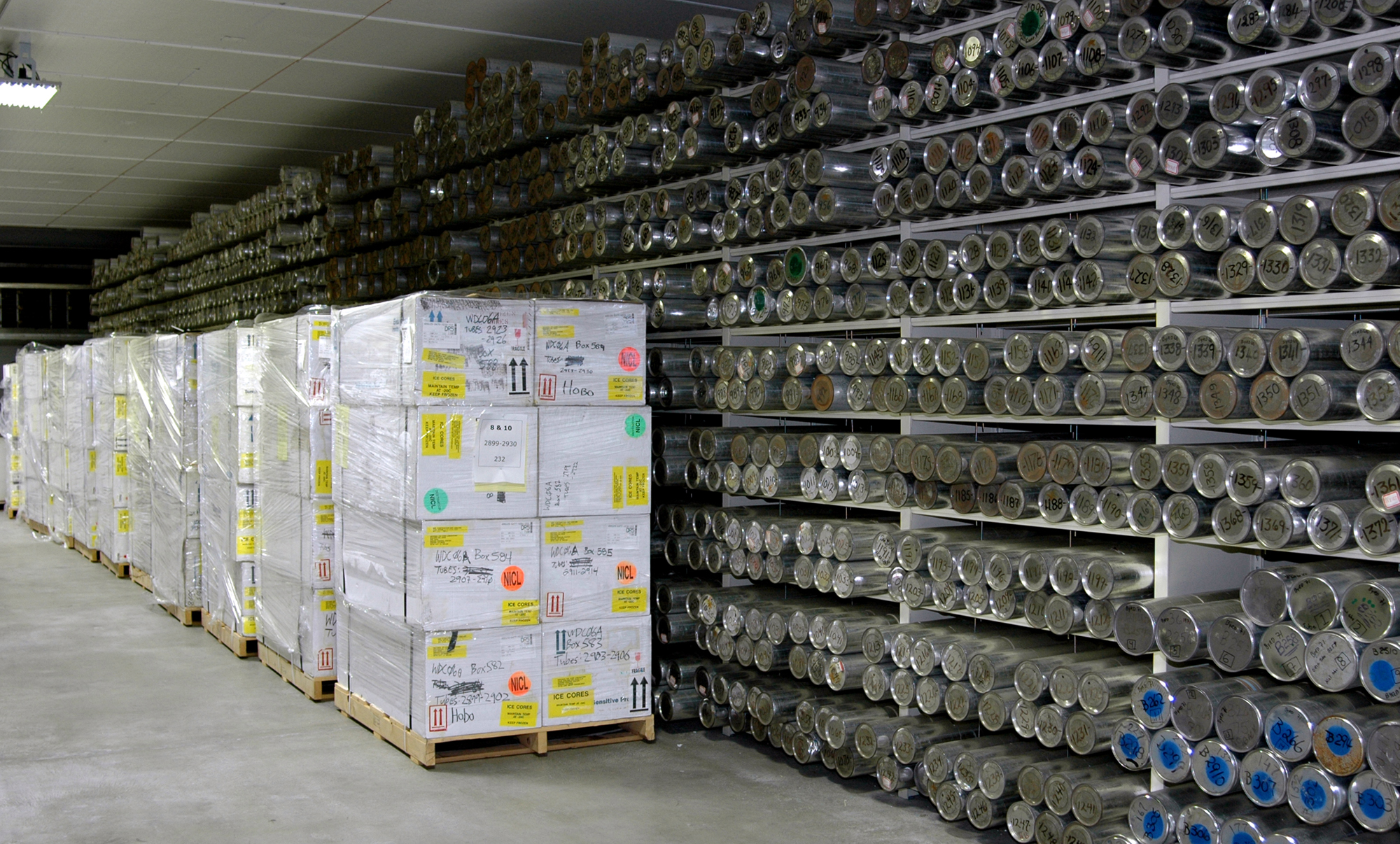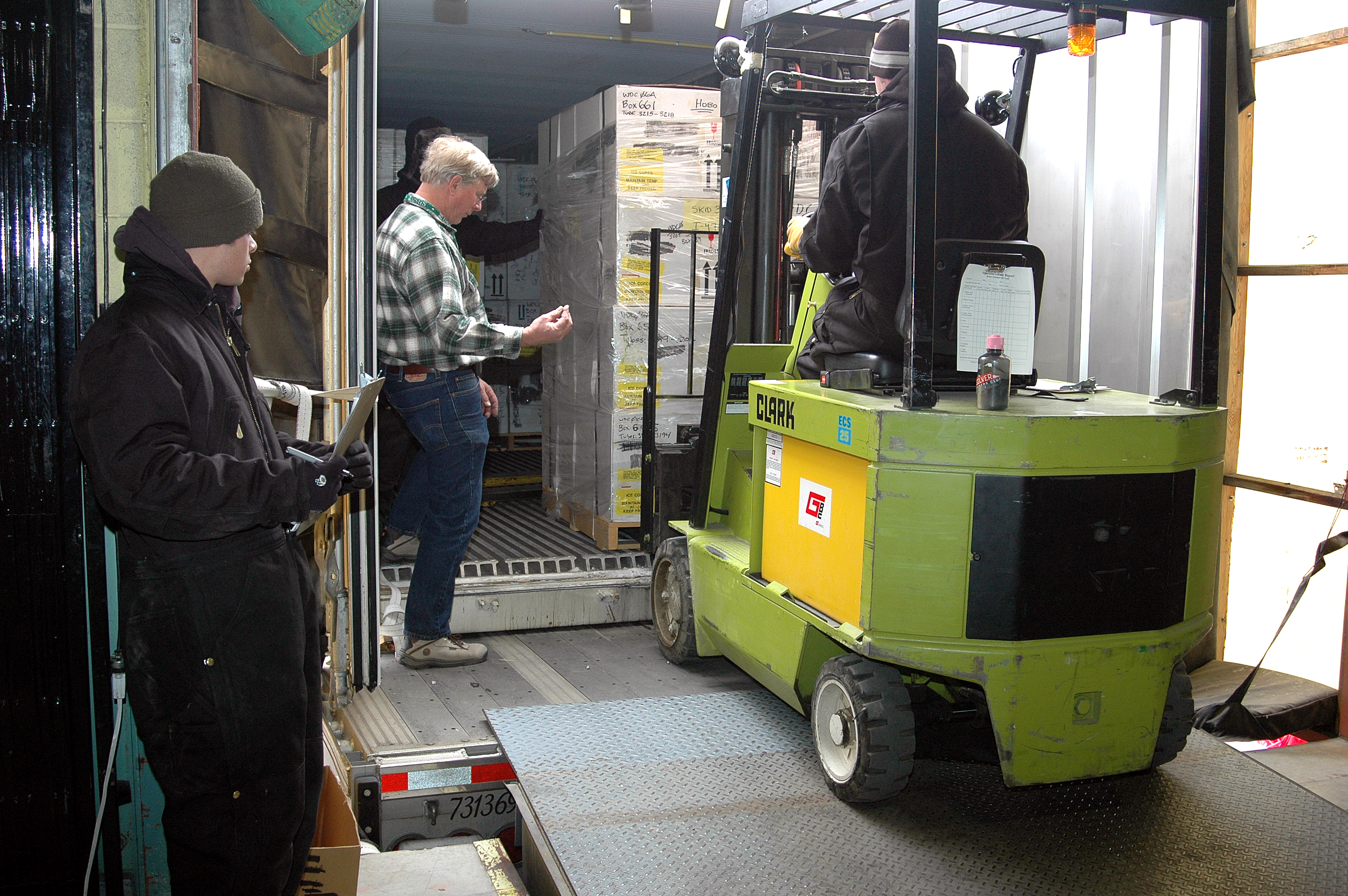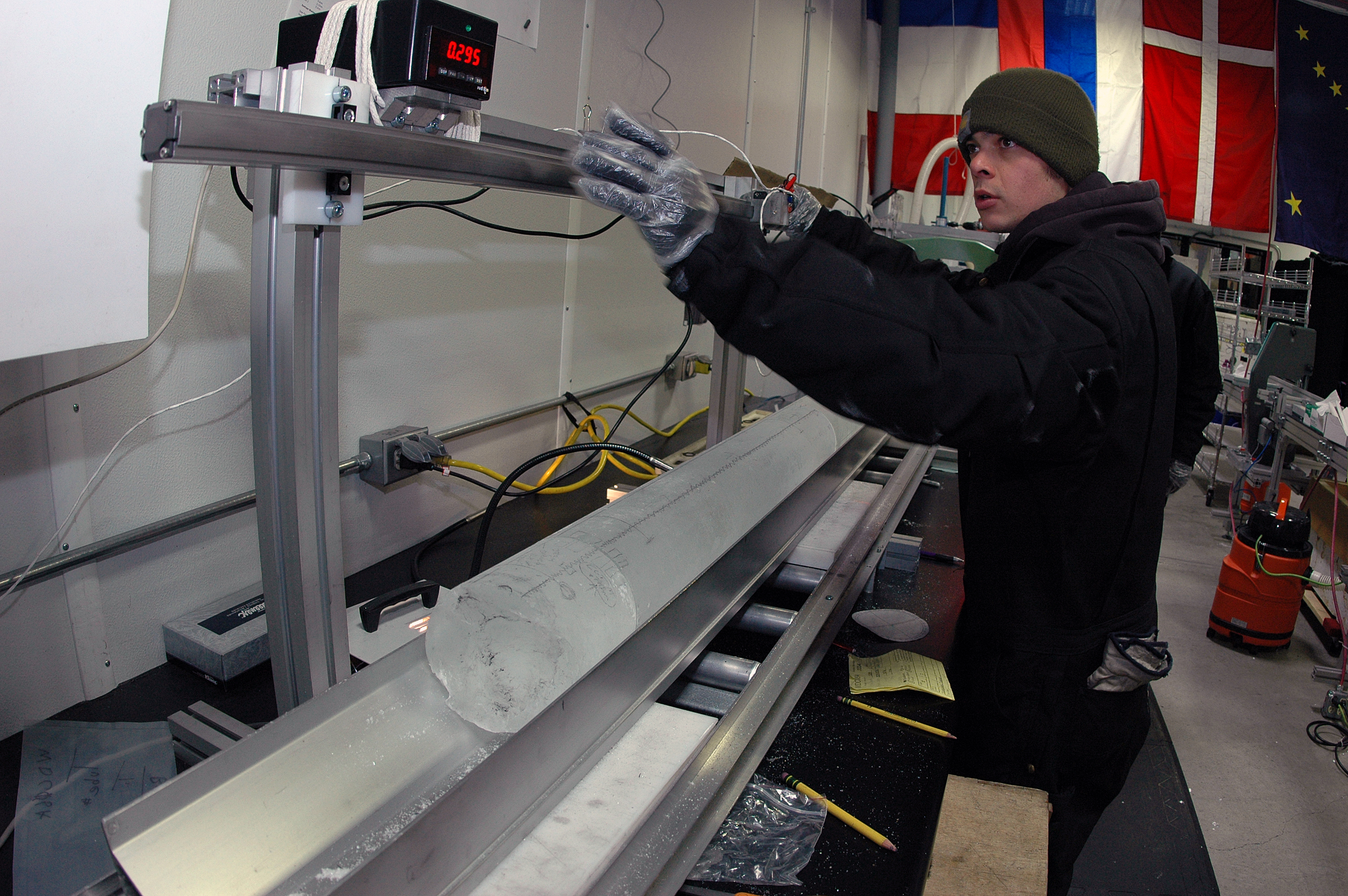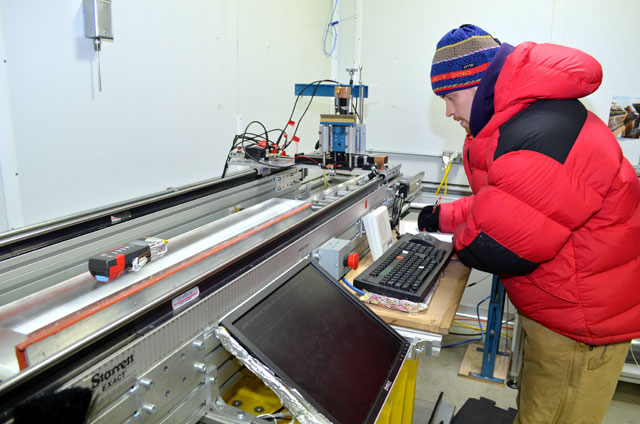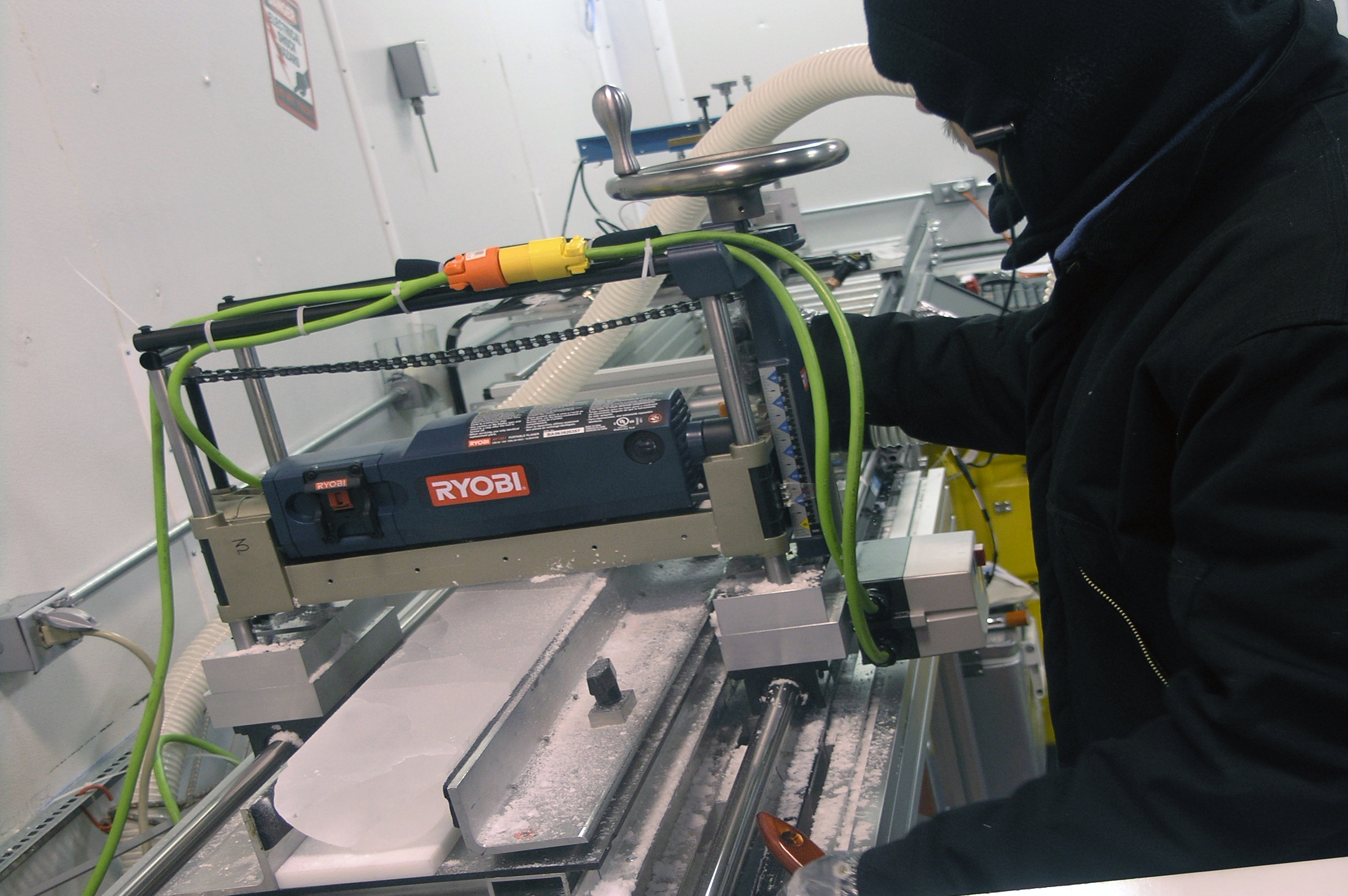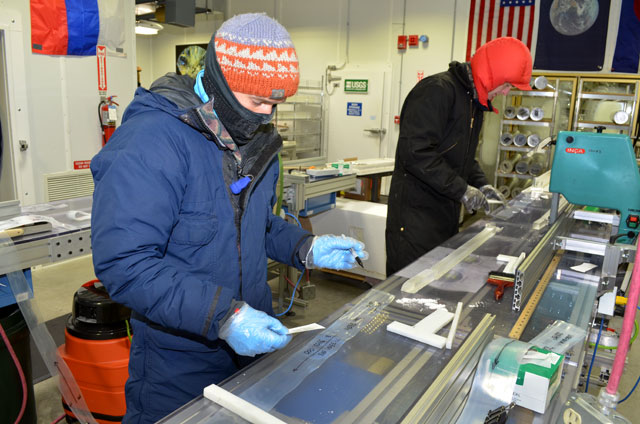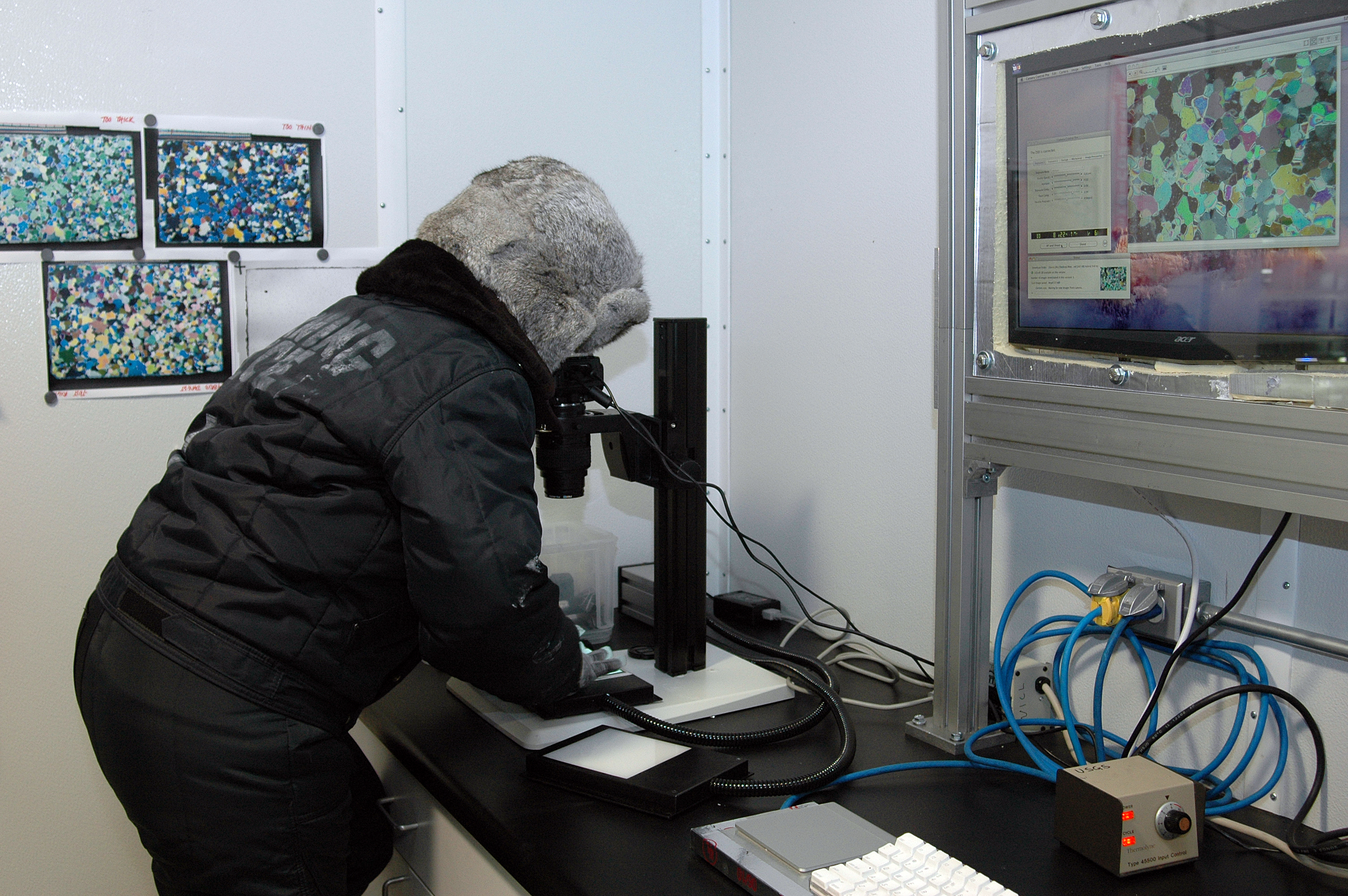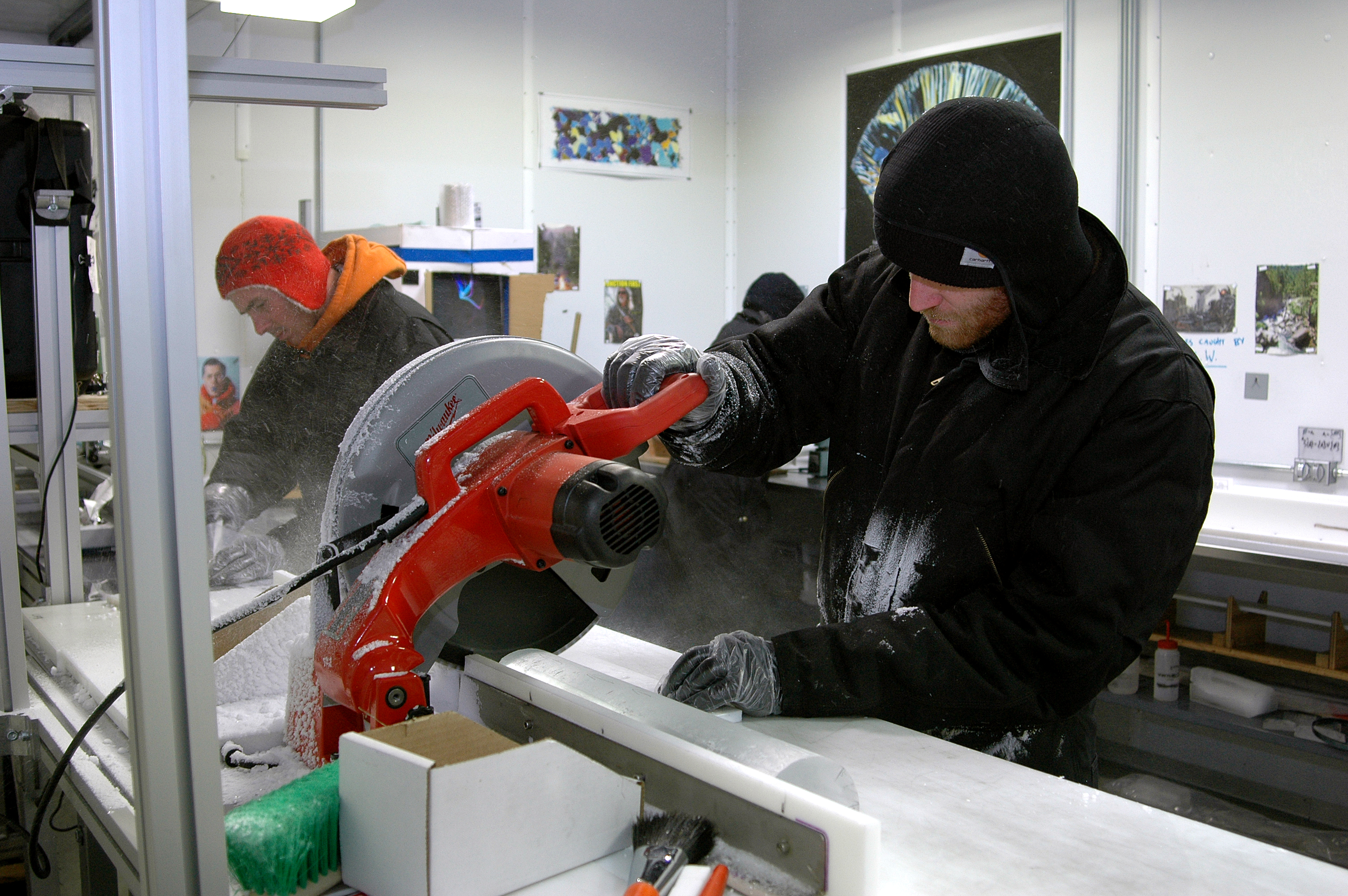Overview
The U.S. National Science Foundation Ice Core Facility (NSF-ICF) — formerly the U.S. National Ice Core Laboratory (NICL) — is a facility for storing, curating, and studying meteoric ice cores recovered from the glaciated regions of the world. It provides scientists with the capability to conduct examinations and measurements on ice cores, and it preserves the integrity of these ice cores in a long-term repository for current and future investigations.
NSF-ICF is funded by the National Science Foundation (NSF) Office of Polar Programs and operated by the U.S. Geological Survey (USGS). The University of New Hampshire provides scientific management.
Physical Facility
The National Ice Core Laboratory (NICL) was established in 1993 and renamed in 2018 to the U.S. National Science Foundation Ice Core Facility (NSF-ICF). NSF-ICF is located at the Denver Federal Center in Lakewood, Colorado, and is funded by the NSF. NSF-ICF is housed administratively within the USGS, Core Science Systems Mission Area, which is responsible for all operational aspects of the facility.
The facility's most important responsibility is for the safe and secure storage and curation of ice cores collected primarily by NSF-sponsored projects. The facility also allows scientists to examine ice cores without having to travel to remote field sites. The main archive freezer is 55,000 cubic feet in size and is held at a temperature of -36°C. A second room for examination of ice cores, held at -24°C, is 12,000 cubic feet in size and is contiguous with the archive area. NSF-ICF also maintains space outside the freezer for material fabrication, storage, changing areas, offices, and visiting scientist workspace.
Science Management Office
Scientific management of NSF-ICF is provided by the Science Management Office (SMO) located at the Institute for the Study of Earth, Oceans and Space at the University of New Hampshire. The SMO oversees the scientific operations and activities at NSF-ICF and serves as the primary point of contact for scientists interested in access to ice cores stored at the facility and/or use of the facility.
Storage & Curation
NSF-ICF's most important responsibility is the safe and secure storage and curation of ice cores collected primarily by National Science Foundation sponsored projects. NSF-ICF's main archive freezer is 55,000 cubic feet in size and is held at a temperature of -36°C.
When a shipment of new ice arrives, the insulated boxes carrying the cores are quickly unloaded into the main archive freezer. Once the new ice has come to thermal equilibrium with its new surroundings, it is carefully unpacked, organized, racked, and inspected. After racking, the tubes are checked into NSF-ICF's inventory system.
Examination & Core Processing
In addition to the main archive freezer, NSF-ICF also has an exam room held at -24°C that scientists use when examining the ice cores. The exam room is 12,000 cubic feet and contiguous with the main archive area.
Scientists often use the exam room to cut samples from the ice cores and then ship them back to their university or laboratory for analysis. Very few analyses on the ice cores are actually carried out at the NSF-ICF. Almost all measurements made on the ice cores are conducted at the scientist's university or laboratory.
A frequent activity at NSF-ICF is called a core processing line, or CPL for short. When a new ice core arrives at NSF-ICF, researchers from around the country, including young scientists working on their doctorates, gather at NSF-ICF for the CPL. During the CPL, the scientists and NSF-ICF staff measure, catalog, cut, and ship pieces of the ice core to their respective universities and laboratories for analysis. Depending on the complexity of the cut plan, cores can typically be run through a CPL at a rate of 30-35 meters per day. At this rate, a 1000-meter-long ice core takes six to eight weeks to process.
The floor plan of the exam room will be specifically tailored to the number of scientists and the type of science or sampling that will be done during a particular CPL. As many as ten different preparation, cutting, or analysis stations may be set up to accommodate the core, with additional processing being performed off the main line if required.
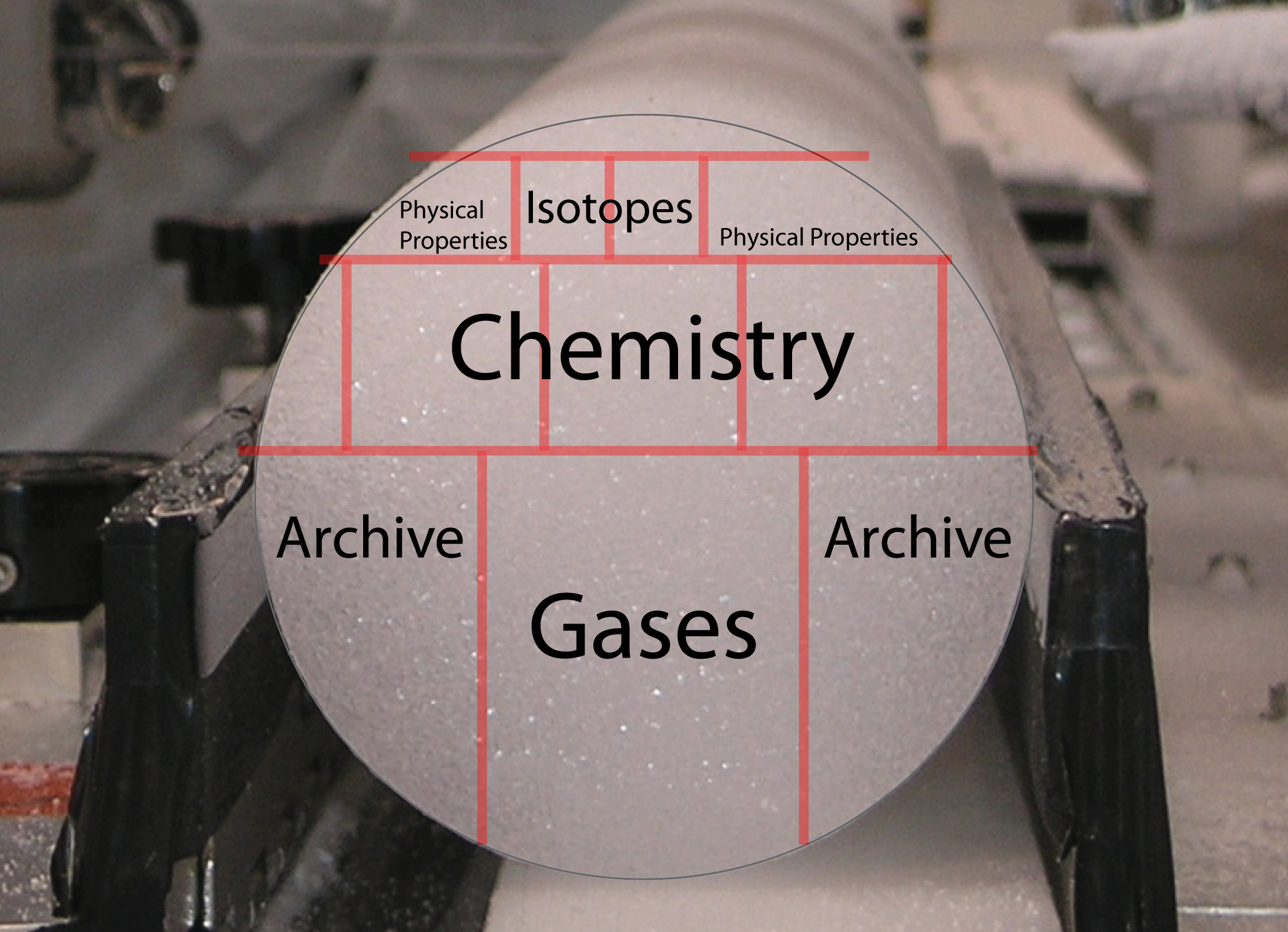
Typical CPL cut plan for a large multi-investigator ice coring project such as the WAIS Divide Ice Core project. —Credit: Joseph Souney, Univ. New Hampshire
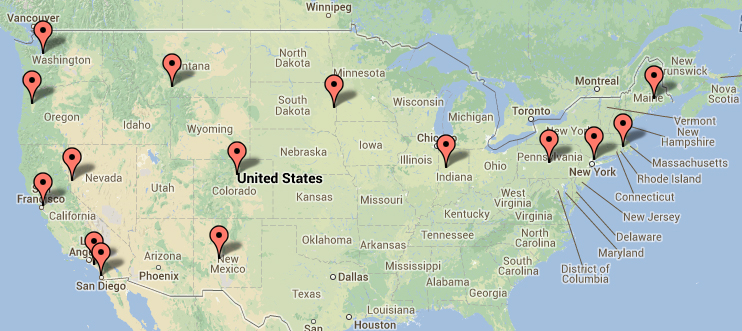
Map showing the locations of the universities and laboratories that received samples from the WAIS Divide Ice Core CPLs. The WAIS Divide ice core is 3,405 meters long—the longest U.S. ice core to date—and extends back in time ~68,000 years. —Credit: Joseph Souney, Univ. New Hampshire


